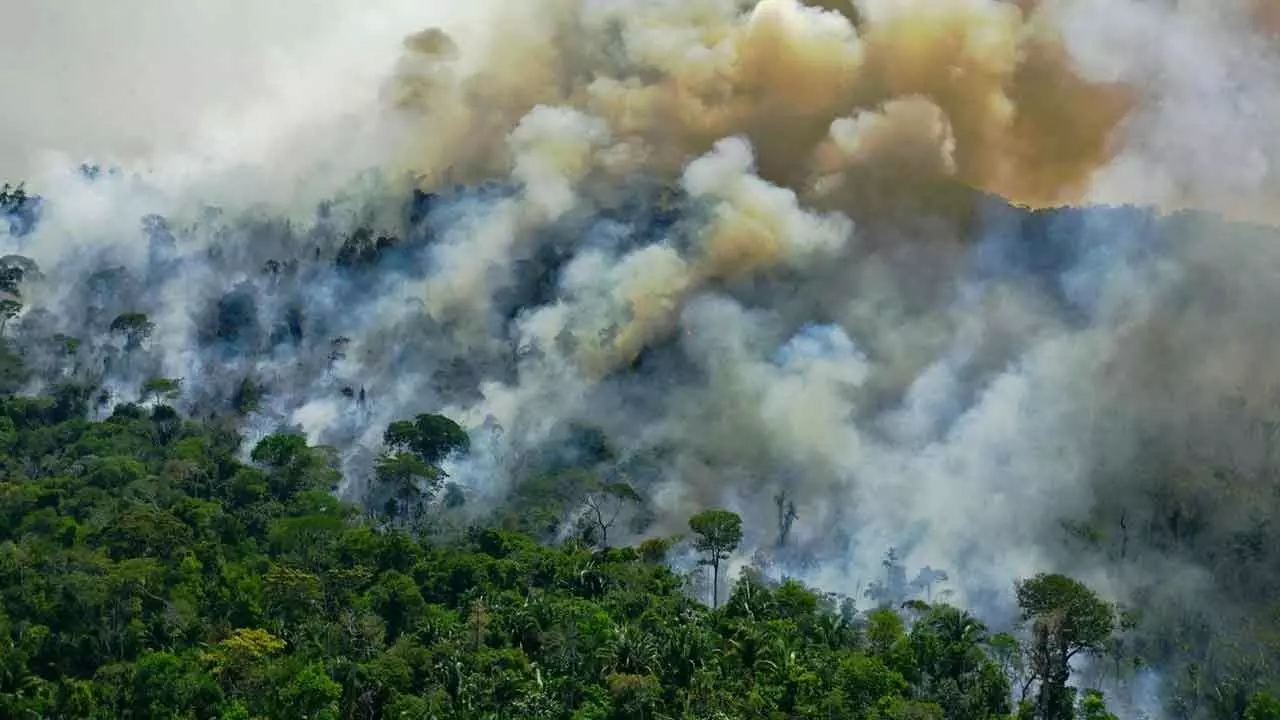Unabated CO2 Emissions And Global Warming Will Kill Tropical Rain Forests
Unabated CO2 Emissions And Global Warming Will Kill Tropical Rain Forests

Different climate models suggest that a projected doubling of CO2 will intensify the atmospheric circulation and consequently rainfall. Nature has delivered many adverse situations which are lessons that humanity must learn and make suitable amends. Many experts believe that the climate change due to such a fast rate of global warming is now irreversible and the collapse of rainforest or ocean biosphere is imminent. As regards hope, at least one recent study suggests that there may be positive signs on this front. At least rain forest may take the heat stress and survive. A team of scientists from IIT Kharagpur, Calcutta University and University of Western Ontario have studied the tropical rain forests (TRF) in sediments from Vastan coal mines of Gujarat deposited in coastal lagoons around 56 million years back. The study found a large anomaly in carbon isotopes exactly at 56 million year. This was such a characteristic signal for a super greenhouse globe with very high atmospheric CO2. The hydrogen and oxygen isotope compositions in clay depend on land temperature and rainfall and act as snapshots of past climate.
Likewise, the isotopes in fossil teeth record the history of the water animals drank. As the CO2 began to increase, the land became abnormally hot- more than 40oC.
But to the scientists’ surprise, they found that the temperature came down to nearly 30oC during the later period, almost similar to today. The rainforest not only survived but also diversified during and after the global warming phase. So what helped the rainforest’s survival? The scientists at these premier institutes critically looked at the rainfall pattern and found that warming intensified rainfall, which, in effect, brought down the levels of temperature. They call it rainfall buffered temperature. The increased rainfall and lowered temperature sustained these ancient rainforests of western India. The Vastan record clearly shows that there may be some hope. At least the rain forest may take the heat stress and survive. The Vastan record is unique in more ways than one. This is the first record of how tropical rainforest responded to elevated levels of CO2 and global warming in the past. The only other available record is from Neotropical South America.
Vastan data shows that globally tropical plant community responded in tandem. Second, the increased rainfall during this super greenhouse earth supports the IPCC prediction of intensified precipitation regime in case of a future extreme 4oC warming of the planet. Vastan is an ancient analogue of how our future greenhouse earth could be. Fossil fuel emission has increased CO2 from the pre-industrial level of 280 ppm to nearly 421 ppm in 2024. Significantly, the tropical rain forests (TRF) like Amazon or Western Ghats are considered as “the lungs of the planet”, contain about 200-300 petagram (1015) or approx. 1/3rd of the total atmospheric carbon and plays a crucial role in modulating the global carbon cycle, biodiversity and hydrological cycle. IIPC’s 2023 AR6 report warns that if the CO2 emission and global warming continues unabated, the TRF community may collapse altogether much before the end of this century. This will drive a global catastrophe affecting nearly 800 million people worldwide. However, it now looks like scientists are sharply divided on the issue and the latest study certainly offers some relieving and comforting news.

